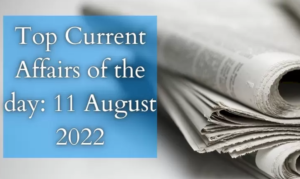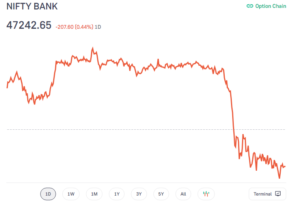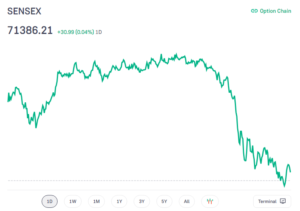
World Leprosy Day 2022: 30 January
World Leprosy Day is observed globally on the last Sunday of January every year. In 2022, the World Leprosy Day falls on January 30, 2022. The day is celebrated to raise global awareness of this deadly ancient disease and call attention to the fact that it can be prevented, treated and cured. In India, World Leprosy Day is celebrated every year on 30 January, the anniversary of Mahatma Gandhi’s death.
This year theme of World Leprosy Day 2022 is “United for Dignity”.
History of the day:
The day was initiated in 1954 by French philanthropist and writer, Raoul Follereau, as a tribute to the life of Mahatma Gandhi who had compassion for people afflicted with leprosy.
What is leprosy?
Leprosy is a chronic infectious disease caused by a bacillus, Mycobacterium leprae (M. laprae). The symptoms of the disease occur generally after a long period of getting an infection on average 5 years, as M. leprae multiplies very slowly. The disease mainly affects the skin, the peripheral nerves, mucosa of the upper respiratory tract, and the eyes.
Women’s Asia Cup Hockey 2022: India beat China to win Bronze
India defeated China, 2-0 to win the bronze medal at the 2022 Women’s Hockey Asia Cup tournament. The 2022 Women’s Hockey Asia Cup was the 10th edition of the quadrennial Women’s Hockey Asia Cup. The tournament was held from January 21 to 28, 2022 at the Sultan Qaboos Sports Complex in Muscat, Oman. Japan defeated South Korea 4-2 in the final to win their third title at the Women’s Hockey Asia Cup tournament.
Australian Open 2022: Rafael Nadal beats Daniil Medvedev
Rafael Nadal (Spain) has defeated Daniill Medvedev (Russia) 2-6,6-7,6-4,6-4,7-5 to win the Men’s Singles title at the Australian Open 2022. This is his 21st Major title, becoming the first male player to do so. In women’s tennis, Margaret Court (Australian) has 24 singles majors, an all-time record. In women’s, World Number 1 Ashleigh Barty of Australia defeated Danielle Collins of the US, 6-3 7-6, to win women’s singles final title at the Australian Open 2022.
The winners list of Australian Open Tennis Title 2022:
| Events | Winners |
| Men’s Singles | Rafael Nadal |
| Women’s Singles | Ashleigh Barty |
| Men’s Doubles | Thanasi Kokkinakis and Nick Kyrgios |
| Women’s Doubles | Barbora Krejčíková and Kateřina Siniaková |
| Mixed Doubles | Kristina Mladenovic and Ivan Dodig |
Meta tie-up with FICCI to support 5 lakh women-owned SMBs across India
Social media giant Meta has partnered with industry body the Federation of Indian Chambers of Commerce & Industry (FICCI) to support five lakh women-led small businesses across India. Meta will undertake this initiative under its #SheMeansBusiness programme, in partnership with FICCI’s ‘Empowering the Greater 50%’ initiative. The initiative will create a supportive ecosystem for women and inspire them to become contributors to the overall development of the country.
Meta will be extending support through three of its initiatives:
- Grow your Business Hub: To provide the necessary information, tools and resources to MSMEs;
- Commerce Partners Programme: To help businesses go digital and D2C using technology;
- Facebook Business Coach: To train women through an educational chatbot tool on WhatsApp.
Important takeaways for all competitive exams:
- Meta CEO: Mark Zuckerberg;
- Meta Headquarters: California, United States;
- FICCI President: Sanjiv Mehta
- FICCI Founded: 1927;
- FICCI Headquarters: New Delhi;
- FICCI Secretary-General: Dilip Chenoy.
Tata Group choose SBI, BoB and HDFC Bank to finance Air India’s old debt
Tata Group has chosen State Bank of India, Bank of Baroda and HDFC Bank as preferred bankers for Air India. Recently Tata Group has taken over Air India from the government. Air India is the largest international carrier out of India with an 18.6% market share. Tata Sons have availed of a Rs 10,000-crore loan from SBI and a Rs 5,000-crore loan from BoB. The loan from HDFC Bank is not known yet. The loans are unrated, unsecured, and pegged at 4.25% [interest rate] annually.
Tata Sons-promoted Talace has acquired Air India, offering Rs 18,000 crore that include Rs 15,300 crore for the carrier’s existing debt and Rs 2,700 crore cash to be paid to the government. The new debt availed by the Tata Group will be used to refinance Air India’s debt availed at over 10%.
Paytm Money launches “India’s first” intelligent messenger called ‘Pops’
Paytm Money has introduced “India’s first” intelligent messenger called ‘Pops’. The company has launched ‘Pops’, with which users can receive specific information related to their stocks, analysis about their portfolio, market news, and important market movements in an easy to consume format, all in one place. The platform will also serve as a marketplace to offer sophisticated stock recommendations, news insights, and other services.
Paytm Money is partnering with InvestorAi to offer stock recommendations based on signals generated using artificial intelligence. Now, with Pops on the Paytm Money app, these investors can monitor their portfolios regularly and learn from the market movements with alerts curated for them.
Important takeaways for all competitive exams:
- Paytm Money CEO: Varun Sridhar;
- Paytm Money Headquarters location: Bengaluru;
- Paytm Money Founded: 20 September 2017.
SPMCIL opens new bank note printing lines at Nashik and Dewas
Security Printing and Minting Corporation of India Limited (SPMCIL) has set up ‘new banknote printing lines’ at its Currency Note Press, Nashik and Bank Note Press, Dewas. In India, four printing presses for printing and supply of Banknotes. These are at Dewas in Madhya Pradesh, Nasik in Maharashtra (owned by SPMCIL), Mysore in Karnataka, and Salboni in West Bengal (owned by Bharatiya Reserve Bank Note Mudran Private Limited (BRBNMPL)).
About the SPMCIL:
SPMCIL, a Government of India owned Miniratna company, is engaged in the manufacture/production of Currency and Bank Notes, Security Paper, Non-Judicial Stamp Papers, Postal Stamps, Passport, Visa, Cheques, Bond, Warrant, Special Certificates with security features, Security Inks, Circulation & Commemorative Coins, Medallions, Refining of Gold & Silver, and Assay of Precious Metals among others.
Important takeaways for all competitive exams:
- SPMCIL Chairman and Managing Director: Tripti Patra Ghosh;
- SPMCIL Founded: 10 February 2006.
A book titled “Fearless Governance” authored by Kiran Bedi
The book titled ‘Fearless Governance’ authored by Dr Kiran Bedi has been released. She is the former Lt Governor of Puducherry and IPS (retd). This book is based on the ground realities of nearly five years of service of Dr Bedi as Lt. Governor of Puducherry and her vast experience of 40 years in the Indian Police Service.
The author demonstrates the right practises of responsible governance. She brought about team spirit, collaboration, financial prudence, effective policing, bonding in services and decision making through fearless leadership. ‘Fearless Governance’ is a book to read, see, hear and feel for good governance and leadership.
Economic Survey 2022: Key highlights of Economic Survey
Finance Minister, Nirmala Sitharaman has presented Economic Survey 2021-22 in the Parliament on 31st January 2022. The pre-budget Economic Survey, which is tabled in Parliament ahead of the Union Budget to present the state of the economy and suggest policy prescriptions. The pre-Budget Economic Survey is authored by a team led by Chief Economic Advisor (CEA). Days before the presentation, the Centre appointed economist V Anantha Nageswaran as the new CEA.
What is the Economic Survey?
- Economic Survey is an annual document of the Ministry of Finance. It reviews the economic progress of the country and issues in the last 12 months.
- The survey provides information related to the performance of key developmental schemes launched by the government. The document also explains the performance of major government policies and their impact.
- The Economic Survey discusses major fiscal developments, macroeconomic factors, inflation, and other economic factors. The document also highlights the impact of agriculture, climate change, and employment on the economy of the country.
- The 1st Economic Survey was tabled in 1950-51. However, till the year 1964, it was presented along with the budget.
Here are the key highlights from the Economic Survey 2021-22:
The government sees the Indian economy growing at 8-8.5 per cent in the financial year 2022-23 (FY23). The GDP growth rate for the ongoing financial year 2021-22 (FY22) is estimated at 9.2 per cent. In order to achieve USD 5 trillion GDP by FY’25, India needs to spend about USD 1.4 trillion over this period on infrastructure, according to the Economic Survey.
The main reason for the lower forecast is the non-availability of significant base effects in 2022-23 as compared to 2021-22. In fact, when these base effects were absent in Q3 and Q4 of 2021-22 and economic activities had started to normalize, the average growth in the second half of 2021-22 was only 5.6%.
- The theme of Economic Survey 2021-22 is the “Agile approach”
State of the Economy:
- Indian economy is estimated to grow by 9.2 per cent in real terms in 2021-22 (as per first advanced estimates) subsequent to a contraction of 7.3 per cent in 2020-21.
- GDP is projected to grow by 8- 8.5 per cent in real terms in 2022-23.
- The year ahead is poised for a pickup in private sector investment with the financial system in a good position to provide support for the economy’s revival.
- The projection was comparable with World Bank and Asian Development Bank’s latest forecasts of real GDP growth of 8.7 per cent and 7.5 per cent respectively for 2022-23.
- As per IMF’s latest World Economic Outlook projections, India’s real GDP is projected to grow at 9 per cent in 2021-22 and 2022-23 and at 7.1 per cent in 2023-2024, which would make India the fastest-growing major economy in the world for all 3years.
- Agriculture and allied sectors are expected to grow by 3.9 per cent; industry by 11.8 per cent and the services sector by 8.2 per cent in 2021-22.
- On-demand side, consumption is estimated to grow by 7.0 percent, Gross Fixed Capital Formation (GFCF) by 15 per cent, exports by 16.5 percent and imports by 29.4 percent in 2021-22.
- Macroeconomic stability indicators suggest that the Indian Economy is well placed to take on the challenges of 2022-23.
- Combination of high foreign exchange reserves sustained foreign direct investment, and rising export earnings will provide an adequate buffer against possible global liquidity tapering in 2022-23.
- The economic impact of the “second wave” was much smaller than that during the full lockdown phase in 2020-21, though the health impact was more severe.
- Government of India’s unique response comprised of safety-nets to cushion the impact on vulnerable sections of society and the business sector, significant increase in capital expenditure to spur growth and supply-side reforms for a sustained long-term expansion.
- The government’s flexible and multi-layered response is partly based on an “Agile” framework that uses feedback-loops, and the use of eighty High-Frequency Indicators (HFIs) in an environment of extreme uncertainty.
Fiscal Developments:
- The revenue receipts from the Central Government (April to November 2021) have gone up by 67.2 per cent (YoY) as against the expected growth of 9.6 per cent in the 2021-22 Budget Estimates (over 2020-21 Provisional Actuals).
- Gross Tax Revenue registers a growth of over 50 per cent during April to November 2021 in YoY terms. This performance is strong compared to pre-pandemic levels of 2019-2020 also.
- During April-November 2021, Capex has grown by 13.5 per cent (YoY) with a focus on infrastructure-intensive sectors.
- Sustained revenue collection and a targeted expenditure policy have contained the fiscal deficit for April to November 2021 at 46.2 per cent of BE.
- With the enhanced borrowings on account of COVID-19, the Central Government debt has gone up from 49.1 per cent of GDP in 2019-20 to 59.3 per cent of GDP in 2020-21 but is expected to follow a declining trajectory with the recovery of the economy.
External Sectors:
- India’s merchandise exports and imports rebounded strongly and surpassed pre-COVID levels during the current financial year.
- There was a significant pickup in net services with both receipts and payments crossing the pre-pandemic levels, despite weak tourism revenues.
- Net capital flows were higher at US$ 65.6 billion in the first half of 2021-22, on account of continued inflow of foreign investment, revival in net external commercial borrowings, higher banking capital and additional special drawing rights (SDR) allocation.
- India’s external debt rose to US $ 593.1 billion at the end-September 2021, from the US $ 556.8 billion a year earlier, reflecting additional SDR allocation by IMF, coupled with higher commercial borrowings.
- Foreign Exchange Reserves crossed US$ 600 billion in the first half of 2021-22 and touched the US $ 633.6 billion as of December 31, 2021.
- As of end-November 2021, India was the fourth-largest forex reserves holder in the world after China, Japan and Switzerland.
Monetary Management and Financial Intermediation:
- The liquidity in the system remained in surplus.
- Repo rate was maintained at 4 per cent in 2021-22.
- RBI undertook various measures such as G-Sec Acquisition Programme and Special Long-Term Repo Operations to provide further liquidity.
The economic shock of the pandemic has been weathered well by the commercial banking system:
- YoY Bank credit growth accelerated gradually in 2021-22 from 5.3 per cent in April 2021 to 9.2 per cent as on 31st December 2021.
- The Gross Non-Performing Advances ratio of Scheduled Commercial Banks (SCBs) declined from 11.2 per cent at the end of 2017-18 to 6.9 per cent at the end of September 2021.
- Net Non-Performing Advances ratio declined from 6 per cent to 2.2 per cent during the same period.
- The capital to risk-weighted asset ratio of SCBs continued to increase from 13 per cent in 2013-14 to 16.54 per cent at the end of September 2021.
- The Return on Assets and Return on Equity for Public Sector Banks continued to be positive for the period ending September 2021.
Exceptional year for the capital markets:
- Rs. 89,066 crores were raised via 75 Initial Public Offering (IPO) issues in April-November 2021, which is much higher than in any year in the last decade.
- Sensex and Nifty scaled up to a touching peak at 61,766 and 18,477 on October 18, 2021.
- Among major emerging market economies, Indian markets outperformed peers in April-December 2021.
Prices and Inflation:
- The average headline CPI-Combined inflation moderated to 5.2 per cent in 2021-22 (April-December) from 6.6 per cent in the corresponding period of 2020-21.
- The decline in retail inflation was led by easing of food inflation.
- Food inflation averaged at a low of 2.9 per cent in 2021-22 (April to December) as against 9.1 per cent in the corresponding period last year.
- Effective supply-side management kept prices of most essential commodities under control during the year.
- Proactive measures were taken to contain the price rise in pulses and edible oils.
- Reduction in central excise and subsequent cuts in Value Added Tax by most States helped ease petrol and diesel prices.
Wholesale inflation based on the Wholesale Price Index (WPI) rose to 12.5 per cent during 2021-22 (April to December). This has been attributed to:
- Low base in the previous year,
- Pick-up in economic activity,
- The sharp increase in international prices of crude oil and other imported inputs, and
- High freight costs.
The divergence between CPI-C and Wholesale price index Inflation:
- The divergence peaked to 9.6 percentage points in May 2020.
- However, this year there was a reversal in divergence with retail inflation falling below wholesale inflation by 8.0 percentage points in December 2021.
This divergence can be explained by factors such as:
- Variations due to base effect,
- The difference in scope and coverage of the two indices,
- Price collections,
- Items covered,
- The difference in commodity weights, and
- The wholesale price index being more sensitive to cost-push inflation led by imported inputs.
With the gradual waning of the base effect in WPI, the divergence in CPI-C and WPI is also expected to narrow down.
Sustainable Development and Climate Change:
- India’s overall score on the NITI Aayog SDG India Index and Dashboard improved to 66 in 2020-21 from 60 in 2019-20 and 57 in 2018-19.
- The number of Front Runners (scoring 65-99) increased to 22 States and UTs in 2020-21 from 10 in 2019-20.
- In North-East India, 64 districts were Front Runners and 39 districts were Performers in the NITI Aayog North-Eastern Region District SDG Index 2021-22.
- India has the tenth largest forest area in the world.
- In 2020, India ranked third globally in increasing its forest area from 2010 to 2020.
- In 2020, the forests covered 24% of India’s total geographical, accounting for 2% of the world’s total forest area.
- In August 2021, the Plastic Waste Management Amendment Rules, 2021, was notified which is aimed at phasing out single-use plastic by 2022.
- Draft regulation on Extended Producer Responsibility for plastic packaging was notified.
- The Compliance status of Grossly Polluting Industries (GPIs) located in the Ganga main stem and its tributaries improved from 39% in 2017 to 81% in 2020.
- The consequent reduction in effluent discharge has been from 349.13 million litres per day (MLD) in 2017 to 280.20 MLD in 2020.
- The Prime Minister, as a part of the national statement delivered at the 26th Conference of Parties (COP 26) in Glasgow in November 2021, announced ambitious targets to be achieved by 2030 to enable further reduction in emissions.
- The need to start the one-word movement ‘LIFE’ (Lifestyle for Environment) urging mindful and deliberate utilization instead of mindless and destructive consumption was underlined.
Agriculture and Food Management:
- The Agriculture sector experienced buoyant growth in past two years, accounting for a sizeable 18.8% (2021-22) in Gross Value Added (GVA) of the country registering a growth of 3.6% in 2020-21 and 3.9% in 2021-22.
- Minimum Support Price (MSP) policy is being used to promote crop diversification.
- Net receipts from crop production have increased by 22.6% in the latest Situation Assessment Survey (SAS) compared to SAS Report of 2014.
- Allied sectors including animal husbandry, dairying and fisheries are steadily emerging to be high growth sectors and major drivers of overall growth in agriculture sector.
- The Livestock sector has grown at a CAGR of 8.15% over the last five years ending 2019-20. It has been a stable source of income across groups of agricultural households accounting for about 15% of their average monthly income.
- Government facilitates food processing through various measures of infrastructure development, subsidized transportation and support for the formalization of micro food enterprises.
- India runs one of the largest food management programmes in the world.
- The government has further extended the coverage of food security networks through schemes like PM Gareeb Kalyan Yojana (PMGKY).
Industry and Infrastructure:
- Index of Industrial Production (IIP) grew at 17.4 per cent (YoY) during April-November 2021 as compared to (-)15.3 per cent in April-November 2020.
- Capital expenditure for the Indian railways has increased to Rs. 155,181 crores in 2020-21 from an average annual of Rs. 45,980 crores during 2009-14 and it has been budgeted to further increase to Rs. 215,058 crores in 2021-22 – a five times increase in comparison to the 2014 level.
- The extent of road construction per day increased substantially in 2020-21 to 36.5 Kms per day from 28 Kms per day in 2019-20 – a rise of 30.4 per cent.
- Net profit to sales ratio of large corporates reached an all-time high of 10.6 per cent in the July-September quarter of 2021-22 despite the pandemic (RBI Study).
- Introduction of Production Linked Incentive (PLI) scheme, the major boost provided to infrastructure-both physical as well as digital, along with measures to reduce transaction costs and improve ease of doing business, would support the pace of recovery.
Services:
- GVA of services crossed pre-pandemic level in July-September quarter of 2021-22; however, GVA of contact intensive sectors like trade, transport, etc. still remain below pre-pandemic level.
- Overall service Sector GVA is expected to grow by 8.2 per cent in 2021-22.
- During April-December 2021, rail freight crossed its pre-pandemic level while air freight and port traffic almost reached their pre-pandemic levels, domestic air and rail passenger traffic are increasing gradually – shows the impact of the second wave was much more muted as compared to during the first wave.
- During the first half of 2021-22, the service sector received over US$ 16.7 billion FDI – accounting for almost 54 per cent of total FDI inflows into India.
- IT-BPM services revenue reached US$ 194 billion in 2020-21, adding 1.38 lakh employees during the same period.
- Major government reforms include removing telecom regulations in the IT-BPO sector and opening up of space sector to private players.
- Services exports surpassed the pre-pandemic level in January-March quarter of 2020-21 and grew by 21.6 per cent in the first half of 2021-22 – strengthened by global demand for software and IT services exports.
- India has become 3rd largest start-up ecosystem in the world after US and China. The number of new recognized start-ups increased to over 14000 in 2021-22 from 733 in 2016-17.
- 44 Indian start-ups have achieved unicorn status in 2021 taking the overall tally of unicorns to 83, most of which are in the services sector.
Social Infrastructure and Employment:
- 157.94 crore doses of COVID-19 vaccines administered as on 16th January 2022; 91.39 crores first dose and 66.05 crores second dose.
- With the revival of the economy, employment indicators bounced back to pre-pandemic levels during the last quarter of 2020-21.
- As per the quarterly Periodic Labour Force Survey (PFLS) data up to March 2021, employment in the urban sector affected by pandemic has recovered almost to the pre-pandemic level.
- According to Employees Provident Fund Organisation (EPFO) data, formalization of jobs continued during the second COVID wave; the adverse impact of COVID on the formalization of jobs was much lower than during the first COVID wave.
- Expenditure on social services (health, education and others) by Centre and States as a proportion of GDP increased from 6.2 % in 2014-15 to 8.6% in 2021-22 (BE).
- Under Jal Jeevan Mission (JJM), 83 districts have become ‘Har Ghar Jal’ districts.
- Increased allotment of funds to Mahatma Gandhi National Rural Employment Guarantee Scheme (MNREGS) to provide a buffer for unorganized labour in rural areas during the pandemic.
As per the National Family Health Survey-5:
- Total Fertility Rate (TFR) came down to 2 in 2019-21 from 2.2 in 2015-16;
- Infant Mortality Rate (IMR), under-five mortality rate and institutional births have improved in 2019-21 over the year 2015-16.
Educationist/social leader Baba Iqbal Singh Ji passes away
Iqbal Singh Kingra, who was an Indian socio-spiritual leader of the Sikh community and an educationalist passed away at the age of 95 years. He was conferred with the Padma Shri in 2022 for his contributions in the field of social work. He established Eternal University in 2008and Akal University, Guru ki Kashi in 2015.
SBI listed the maiden issue of $300 million Formosa bonds on India INX
State Bank of India (SBI) has issued $300 million Formosa bonds and listed the issuance on India INX GIFT IFSC. The lender is the first Indian entity to raise money through Formosa Bond, which is a bond issued in Taiwan. SBI was the first issuer whose Green bonds were dually listed in November 2021 on Luxembourg Stock Exchange through an MOU that has been entered into by both Exchanges.
This first successful issuance of Formosa Bond by any Indian commercial bank, is a testimony of the confidence reposed by the overseas investors into India’s growth story and also in SBI.
Important takeaways for all competitive exams:
- SBI Founded: 1 July 1955;
- SBI Headquarters: Mumbai;
- SBI Chairman: Dinesh Kumar Khara.
India tie-up with Israel to convert 150 villages into ‘Villages of Excellence’
The Government of India has joined hands with the Government of Israel to create 150 ‘Villages of Excellence’ in 12 States of the country, to help farmers to adopt the latest technology in the farm sector. Israel would provide Technical assistance and other expertise to make agriculture a more profitable business.
The 150 villages that are located around CoEs will be converted into ‘Villages of Excellence.’ Out of which, 75 villages are being taken up in the first year to commemorate the 75th year of India’s independence. Already, the Israeli government has established 29 Centres of Excellence (CoEs) in 12 states.
Important takeaways for all competitive exams:
- Israel President: Isaac Herzog;
- Israel Capital: Jerusalem;
- Israel Prime minister: Naftali Bennett;
- Israel Currency: Israeli Shekel.
India and ASEAN nations approves Digital Work Plan 2022
India and ASEAN nations have approved a work plan titled India-ASEAN Digital Work Plan 2022, during the second ASEAN Digital Ministers’ (ADGMIN) Meeting held virtually. The ADGMIN meeting was co-chaired by Devusinh Chauhan, Minister of State for Communications, Government of India, and Admiral Tin Aung San, Myanmar’s Minister of Transport and Communications.
Under the plan:
- India and ASEAN will jointly work to develop a system to combat the use of stolen and counterfeit mobile handsets, and a WiFi Access network interface for nationwide public internet.
- The plan also includes capacity building and knowledge sharing in emerging areas in Information and Communication Technologies such as Internet of Things, 5G, Advanced Satellite Communication and Cyber Forensics.
Maharashtra has highest number of SC entrepreneurs
Maharashtra has topped India’s list in the number of micro, small and medium enterprises (MSME) owned by entrepreneurs from the Scheduled Castes with as many as 96,805 enterprises. Tamil Nadu with 42,997 enterprises and Rajasthan with 38,517 units occupy the second and third slots, according to the data furnished by the Office of the Development Commissioner in the Union Ministry of MSME.
The fourth, fifth and sixth slots belong to Uttar Pradesh (36,913 units), Karnataka (28,803 enterprises) and Punjab (24,503 units) respectively. Generally, the proportion of enterprises owned by Scheduled Caste entrepreneurs in the overall national tally of MSMEs is 6%.
6th Pan Am Women Cup Hockey Championship: Argentina beat Chile
Argentina defeated Chile, 4-2 to win its 6th women’s field hockey championship title at the 2022 Women’s Pan American Cup. The Women’s Pan American Cup is the quadrennial international championship of the Americas organized by the Pan American Hockey Federation.
The 2022 Women’s Pan Am Cup was the sixth edition of the championship. It was held from January 19 to 29, 2022 in Santiago, Chile. With this win both Argentina and Chile have sealed automatic qualification spots at the FIH Hockey Women’s World Cup, Spain and Netherlands 2022.








